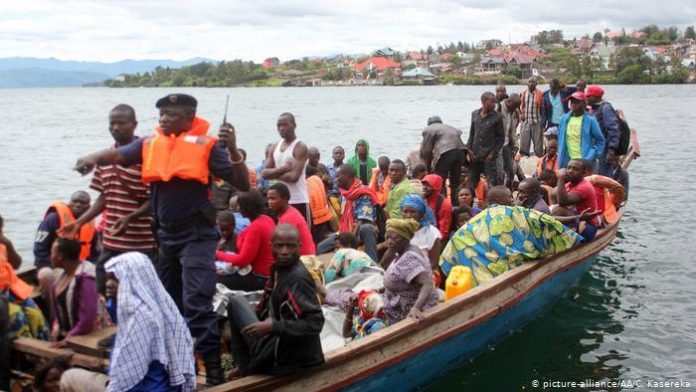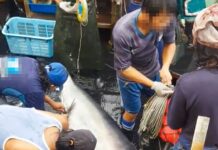By Nina Mitch
Air travels for many Congolese is seen as an extreme luxury as many live below the abject poverty line. Poverty and a huge country that has impassable roads and poor rail network, coupled with insecurity from the north to the south of the country has rendered transportation industry a nightmare on the people of Congo
In the absence of a robust transportation sector, most citizens have taken solace in fluvial and lacustrine networks which covers at least 25,000km of waterways and used to transport goods and people in places where road and railway networks are unavailable.
However, shipwrecks are becoming a common occurrence on these rivers with no less than 200 deaths recorded from five shipwrecks on different waterways in the first half of 2019.

The latest sinking of a motorized canoe occurred on Lake Kivu in Bukavu (South Kivu) on August 10, with about 60 people on board.
The boat left Bukavu for Idjwi Island, East of DRC, and capsized after half an hour of navigation. 3 people lost their lives and 20 survivors were taken to the hospital.
Another incident recorded on July 27, on River Lukenye in Bisenge village in Dekese territory, Kasai Province, with 5 bodies recovered from the river after 7 days of intense search. Another 50 missing bodies from the same ship were found on the missing whaling ship while 159 people survived out of 214 passengers on board. Most of the victims are allegedly from Kole territory in Sankuru in Kasai province and were heading to Kinshasa.
Also in May this year, more than 45 people out of 400 registered passengers lost their lives in a wreck on Lake Mai-Ndombe in north-eastern DRC. There were 183 survivors out of nearly 400 people on board while traveling between the Inongo and Lokanga communities. It was, however, gathered that ship may have suffered from overloading as only 113 of the 400 onboard were on the official list of the flat-bottomed wooden whaler designed to hold only 80 passengers.

On April 16, another sea disaster cost the lives of more than 100 people between Goma and Kalehe territory on Lake Kivu in South Kivu Province in eastern DRC. Only 37 people of the 150 passengers survived onboard a boat with a maximum load capacity of 70 people. The boat manifest said only 60 people were on board. Several other shipwrecks occur but are never reported to the authorities.
The DRC is increasingly notorious for her high maritime accidents, thus, resulting in very heavy balance sheets. Investigations have shown the causes are often the same, like capsizing due to overloading, poor quality of the boats and poor weight distribution.
The exact number of passengers is often difficult to establish on whaling-type vessels, which are often old and in bad conditions. The lack of safety equipment such as life jackets and most passengers inability to swim are also part of the problem. Most of these whaling-type vessels that provide fluvial transport in the waterways belong to private companies, who cut corners making use of makeshift boats built-in corner sites with poor safety standards.
As it stands, there are almost no quality boats and this forces the majority of the populace to patronize these unbalanced canoes. But despite the resurgence of sinking, the population continues to use the same route of transportation between cities along the lakes and rivers because of poor road conditions which are yet to see major improvements in recent times.














